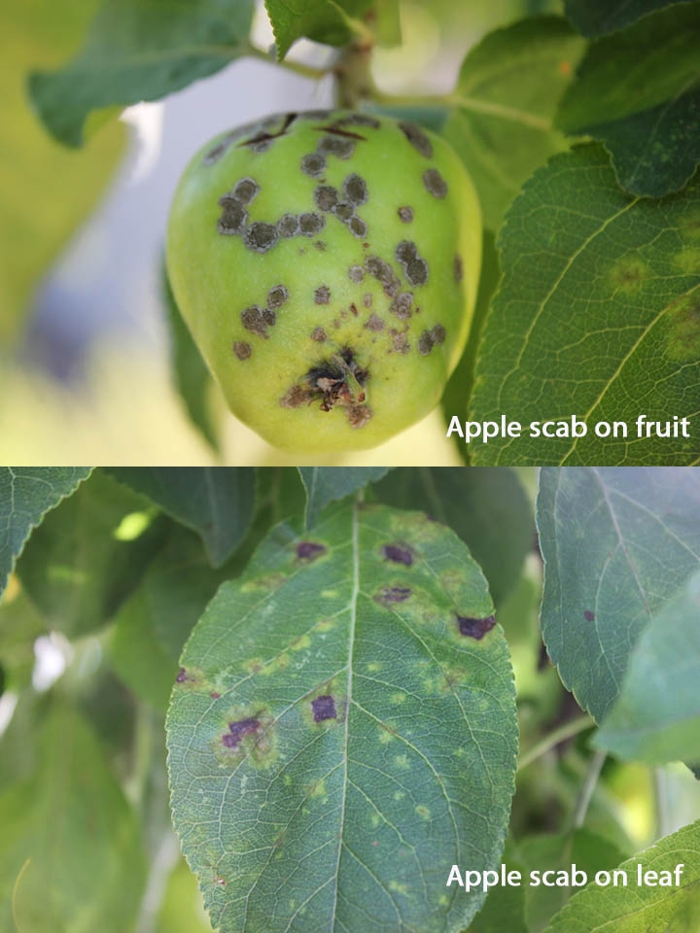
Apple scab
Venturia inaqualis
Apple scab is caused by the fungus Venturia
Symptoms
- Scab may form on leaves, fruit, leaf and fruit stems, and green twigs. Infections occur as rough circular brown to olive green lesions. Lesions on fruit turn dark brown and black and become corky or scab-lik
Control
- Practice good garden sanitation. The fungus can harbour in fallen leaves. Rake up leaves in fall before the snow falls. Leaves can be burned, buried or composted. Even with good sanitation, spores from neighbouring trees can return to infect the tree the following year.
- Keep trees properly pruned. An overgrown or dense canopy encourages the fungus, which needs moisture to grow. Trees with an airy, open canopy allows leaves to dry quickly, which can reduce the severity of the disease. Apple trees should be pruned in late winter or early spring before the tree leafs out. See our pruning video here: USask Fruit Tree Pruning Video
- Fungicide sprays are only potentially effective if applied when the disease is active, which is usually at the beginning of or shortly after the
green tip stage of the leaf.
Check the susceptibility of scab for different cultivars. Cultivars that are immune to apple scab are available.

